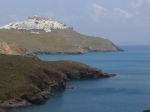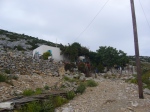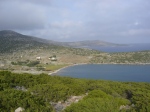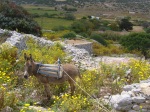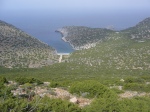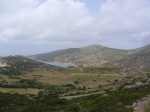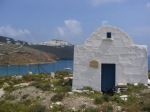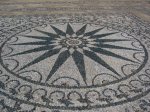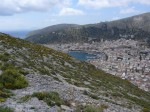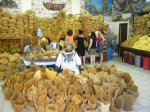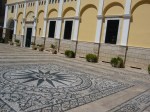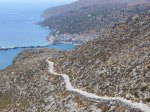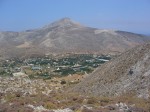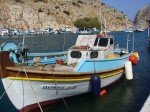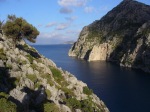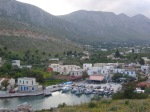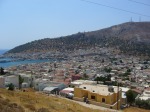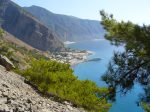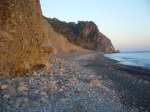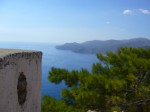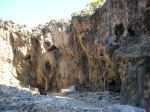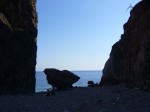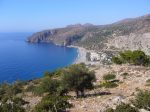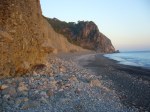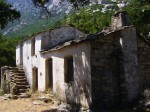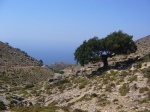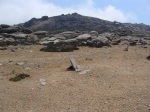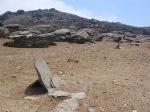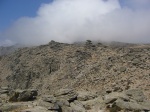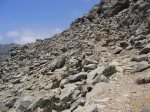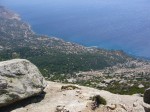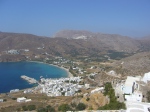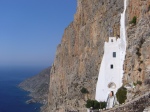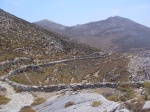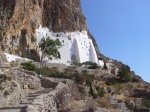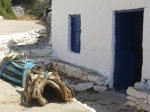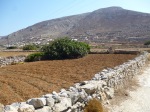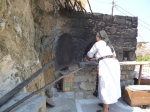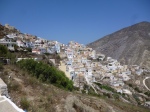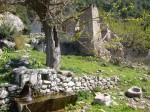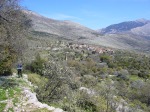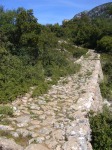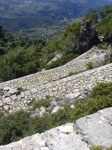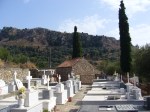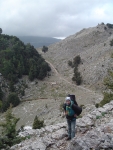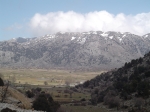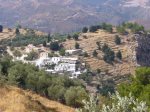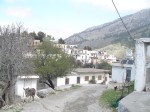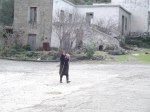The fourth of Christian Peter’s walks.
4. Sfakián Monopatia – The old connection between Asi Gonia and Anopoli – Sfakiá/Crete
How often did Paddy, Xan Fielding and George Psychoundakis walk the old Monopati from Asi Goni via Askifou to the Sfakian mountain villages of Anopoli and Agios Ioannis? Did that connection play a major role during the Cretan resistance?
The mountain region of Sfakiá is the heartland of what Xan Fielding called The stronghold. Here, in the Highlands of the White Mountains, Crete until today remained as pure and unspoiled as it always was. The walk starts in the birthplace of the Cretan Runner, George Psychoundakis, then reaches the hamlet of Goni in the Askifou-Plateau and continues via to Kali Lakki to Anopoli. Next to Anopoli, on the ridge of the Aradena Gorge, lies the ruined village of Aradena, where in 1947 a vendetta broke out and made its inhabitants leave. Aradena is as well the imaginary village, where Ioanna Karystiani’s novel Suit in the earth (Greek title: Koustoumi sto choma) might take place. Karystiani’s family is originally from Askifou. Following the bridge over the gorge, the walker continues to Agios Ioannis, Crete`s highest mountain village. A little bit underneath of Agios Ioannis you can find a place called Sellouda, which for me is the most impressive place in entire Crete. With the Levka Ori in your back you stand thousand meters high above the sea spotting Africa on the horizon. Although the cliffs seem impossible to pass through you can easily follow a stone paved Kalderimi through steepest terrain which leads you almost thousand meters difference in altitude down to the church of Agios Pavlos on the beach. From there you can continue your two days trek to Agia Roumeli.
This slideshow requires JavaScript.
Books about the region:
Xan Fielding (1954): Hide and Seek. Secker and Warburg.
Xan Fielding (1955): The Stronghold: An account of the four seasons in the White Mountains of Crete. Secker and Warburg.
Ioanna Karystiani (2000): Suit in the earth (German title: Schattenhochzeit)
Loraine Wilson (2002): Crete. The White mountains. A walking and Trekking guide. Cicerone
Peter Trudgill (2008): In Sfakiá. Passing time in the Wilds of Crete. Lycabettus Press.

